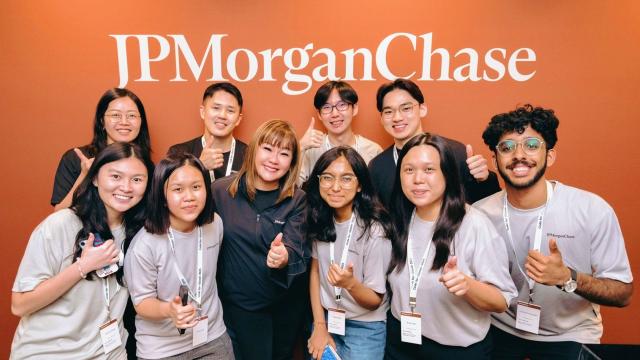Climate change and depleting natural resources have pushed the energy sector, both globally and in Singapore, to embrace more sustainable technologies and practices. SIT is a strong supporter of this transformation journey and is working closely with partners to support Singapore's move to decarbonise.
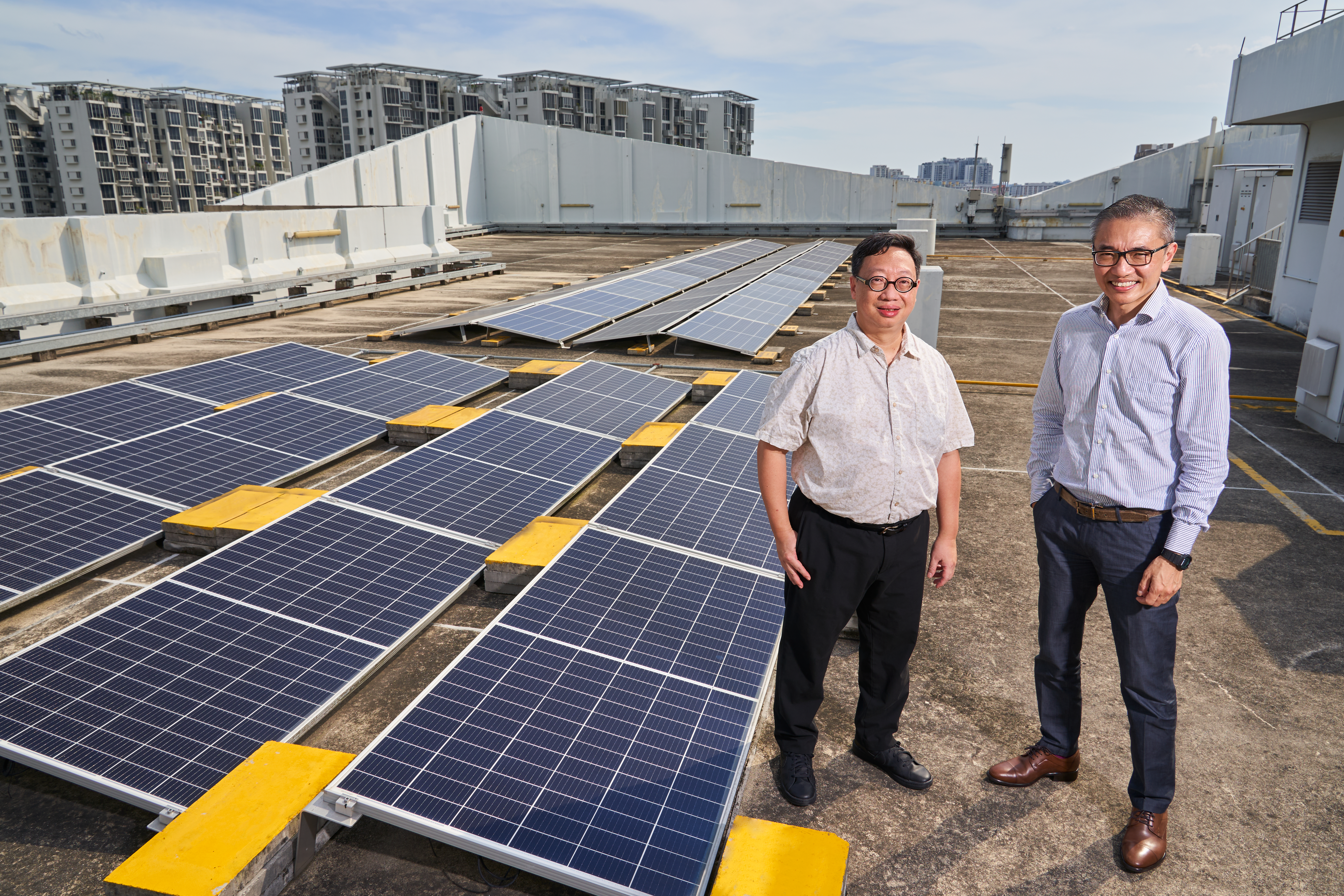
SIT is collaborating with SP Group on a modelling project to create a digital twin of the microgrid that will be launched in SIT’s upcoming Punggol campus. From left, Professor Tseng King Jet, Director of Programmes, Engineering, SIT and Dr Michael Lim Tian, Head, Energy Services, Sustainable Energy Solutions, SP Group, at the building-level islanded microgrid at SIT@NYP Building. (SIT Photo: Keng Photography/Tan Eng Keng)
Adapting to the New Energy Paradigm
With strong impetus to reduce carbon emissions, the energy industry has shifted towards solar, wind energy and other types of low-carbon alternatives. This has resulted not only in significant cost reduction of such renewable energy supplies over the last decade, but also the emergence of a strong global supply chain around the renewable economy.
The power generated from Variable Renewable Energy (VRE) resources, such as solar and wind energy, is intermittent and unpredictable since it is greatly dependent on weather conditions. Therefore, a key enabler for reliable, secure and large-scale penetration of renewable energy is energy storage. The latter balances the intermittent energy supply and variations in energy demand and helps to ensure the reliability and economic viability of future low-carbon grids.
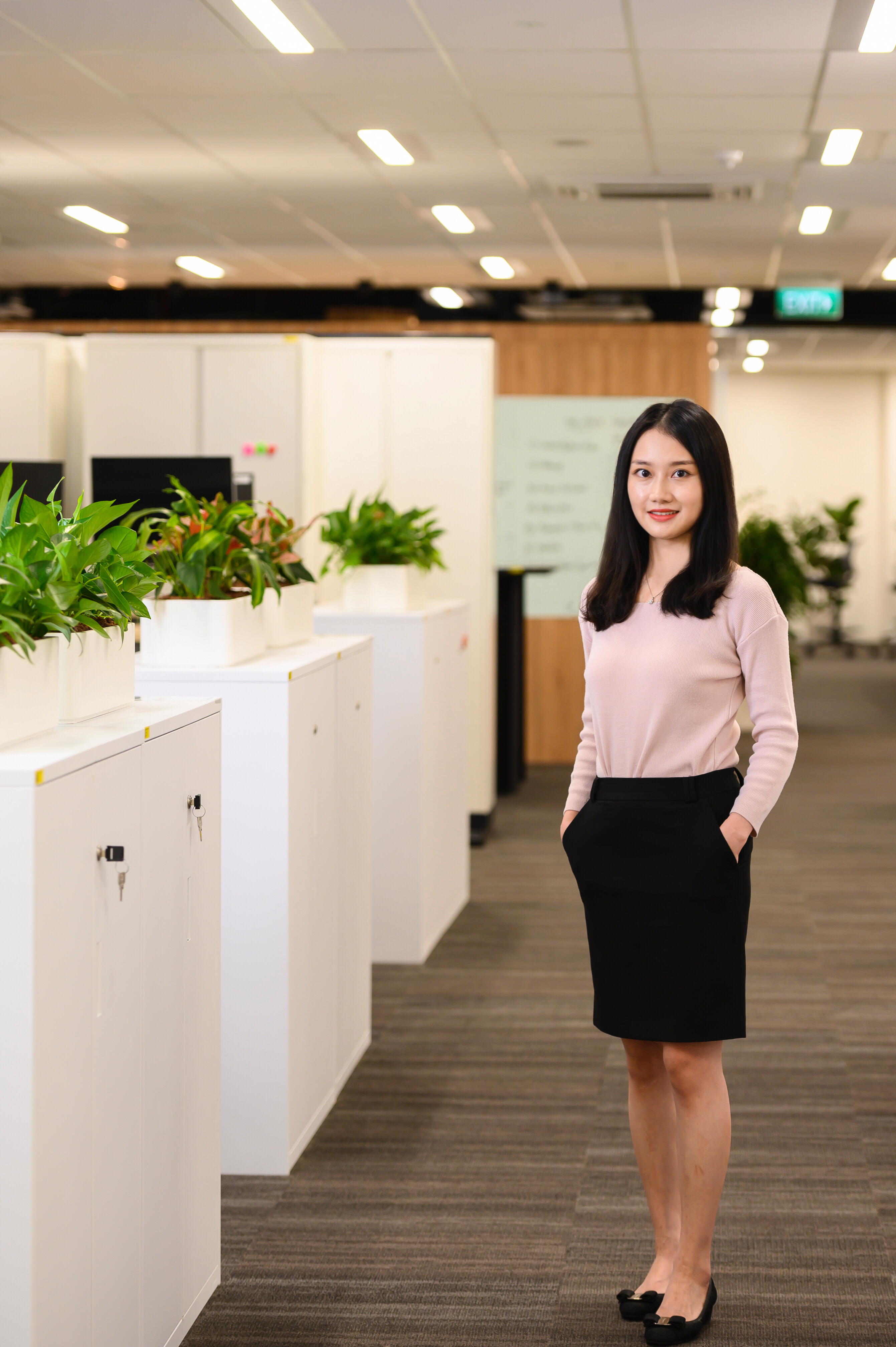
“To maximise the potential of VRE, enhanced interconnection between energy systems in regional power grids will be required. A higher mix of energy resource types in the future energy system and better energy management due to enhanced coordination of supply and demand, optimal use of energy storage and increased demand response capabilities, will help to facilitate adaptation to the new energy paradigm,” said Assistant Professor Elsa Feng (left), Engineering Cluster, SIT.
SIT has conducted a number of research projects that seek to support Singapore in its journey to develop a more energy-resilient built environment.
Renewable Energy Integration and Storage on Pulau Ubin
In the fields of renewable energy integration and energy storage, SIT is working with EDPR Sunseap to investigate the capabilities of different types of distributed energy resources (DERs), such as solar panels and energy storage devices, within a microgrid testbed on Pulau Ubin.
The performance of these different types of DERs, including both VRE-based generation and energy storage, are being evaluated through a combination of hardware and software tools. These tools measure operational efficiency and economic effectiveness on an actual microgrid serving residential and commercial loads.
The project comprises two sub-projects. One is to enhance solar power efficiency by placing solar panels over a green roof. The other is to develop and demonstrate the performance of an advanced redox flow battery with high round trip efficiency (less energy required to charge the battery) in a microgrid.
Mitigating Fire Hazards in Energy Storage Systems
SIT is collaborating with Building System and Diagnostic Pte Ltd, Regentech Pte Ltd, as well as partners in Korea, On-Test Inc and Korea University, on a project that aims to develop a management system for mitigating fire hazards in energy storage systems (ESS), under hot and humid climates.
This project seeks to understand how Singapore’s climate affects ESS in terms of stability and efficiency. By utilising a combination of artificial intelligence-driven battery degradation analytics and new cooling methods (air and water cooling), the system aims to regulate the temperature of the ESS to ensure efficiency without compromising safety.
Modelling the Energy Grid of SIT’s Punggol Campus
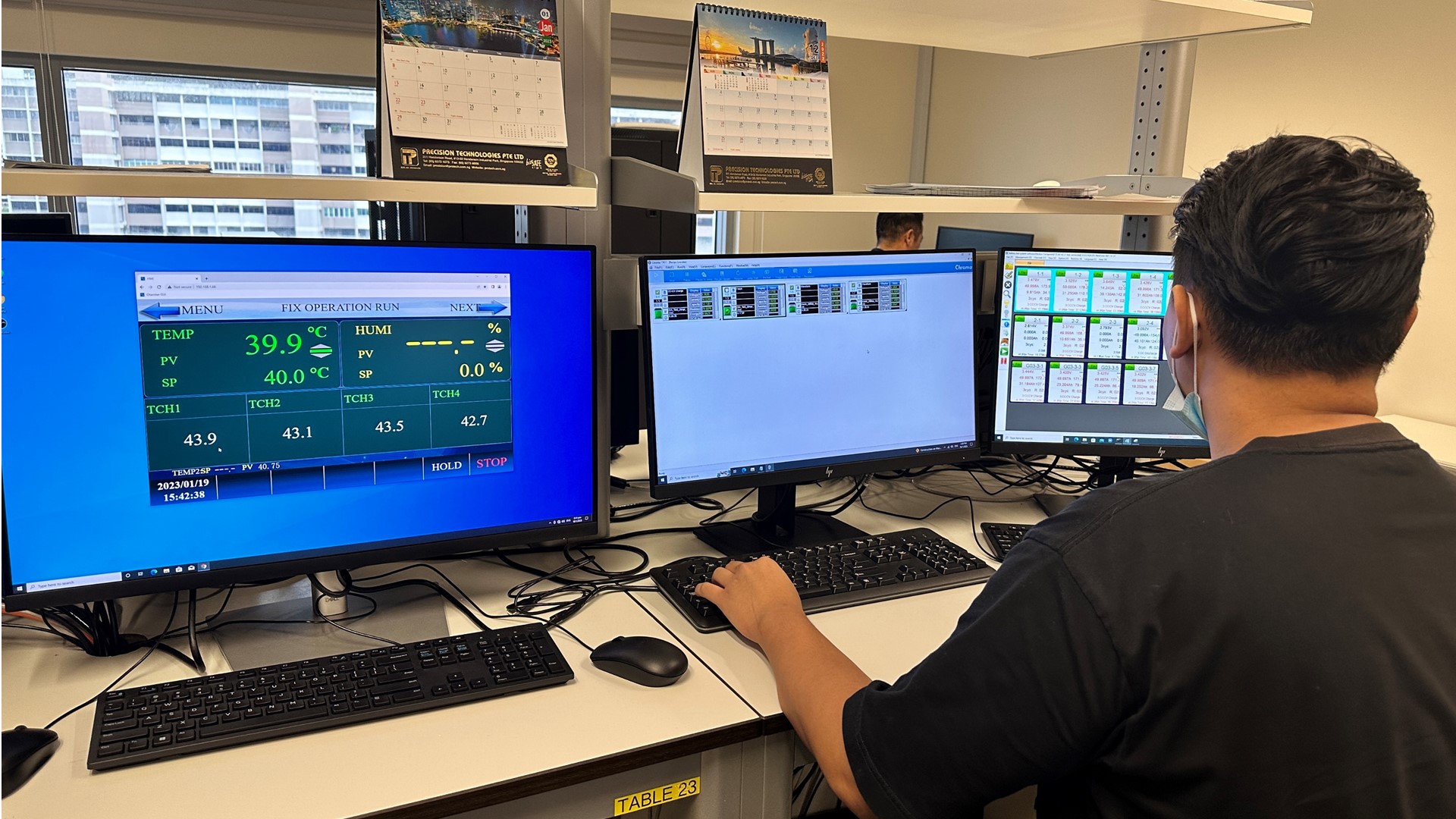
An SIT research engineer working on the digital twin of a microgrid. (Photo: Elsa Feng)
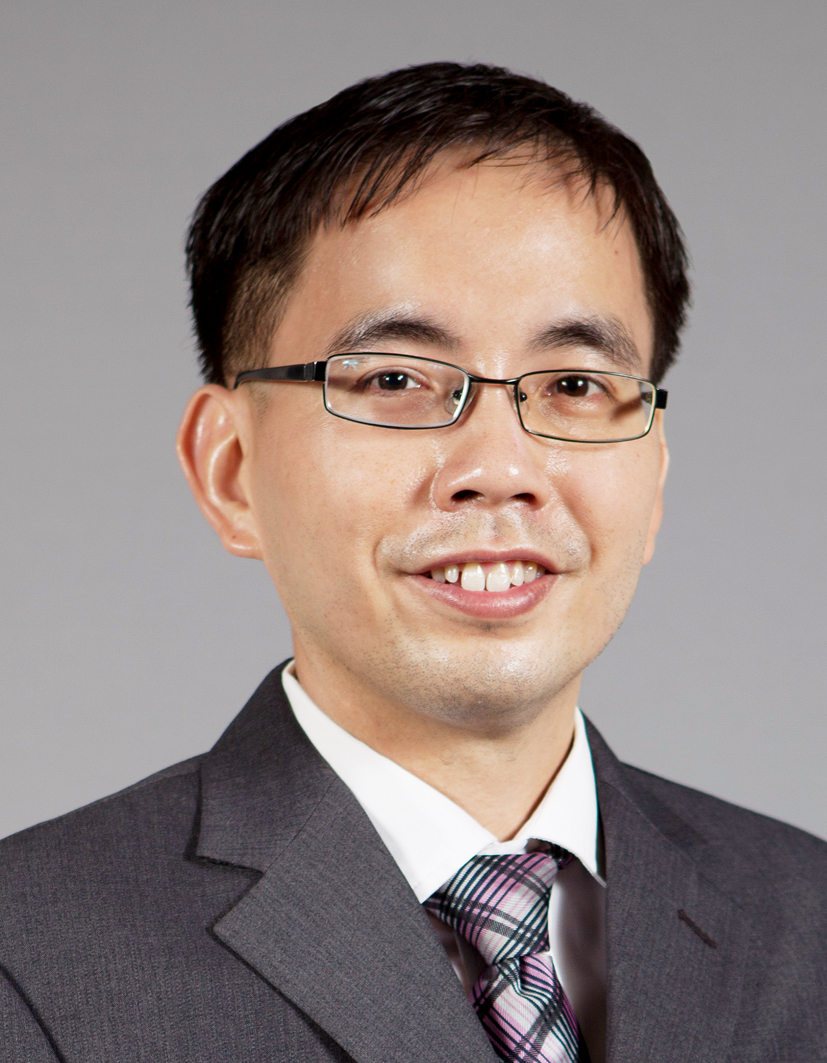
Together with SP Group, SIT embarked on a modelling project to simulate the microgrid at SIT’s upcoming Punggol campus. Through the use of a digital twin microgrid, the project tested the viability of using a combination of renewables-powered and fossil fuel-powered energy, as well as ESS to meet the energy demands of the future campus.
“The project allowed SIT to mimic disruptions to generation, power surges and so on. We were also able to study, based on the proposed models, the rate of degradation of solar cells and batteries under different usage scenarios. This project represents efforts to decarbonise the built environment using a hybrid mix of power from green renewables and traditional resources. Through better planning and scheduling to meet load demands, the comfort of dwellers need not be compromised while still fulfilling decarbonisation goals,” said Lead Co-Principal Investigator A/Prof Soh Chew Beng (left), Engineering Cluster, SIT.
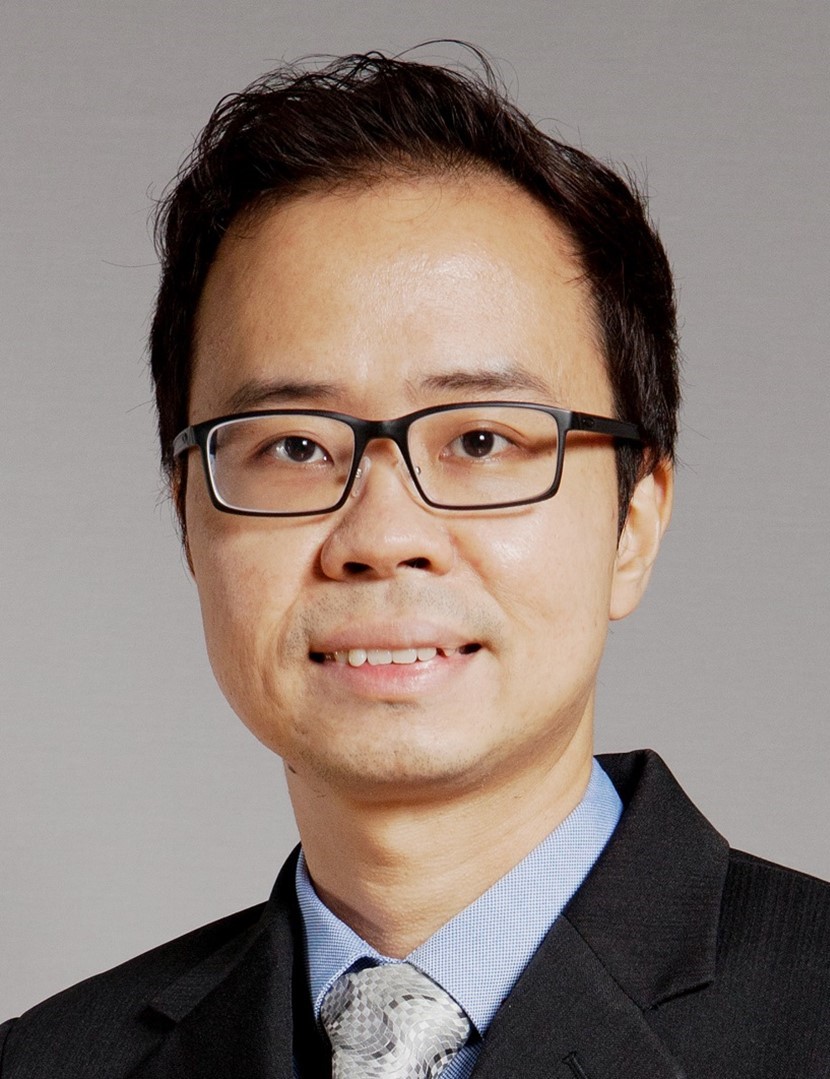
Prototyping Cooling Technology
SIT is also involved in testing and prototyping of cooling systems to push the boundaries of existing cooling technology. One example is the Passive Displacement Cooling (PDC) system, which has been identified by the Building and Construction Authority (BCA) as one of the cooling technologies that can help to create a super low energy building, defined as one that can achieve at least 60 per cent energy savings above 2005 building codes.
“In collaboration with Shinhan-Tech Engineering Pte Ltd and MET Engineering Pte Ltd, our team evaluated a Passive Displacement Dual Cooling Coil (PDDCC) system and improved its design through the utilisation of Computational Fluid Dynamics simulations, mock-up parametric tests in the BCA Skylab and implementation in a hotel,” said Principal Investigator A/Prof Steve Kardinal Jusuf (left), Engineering Cluster, SIT.
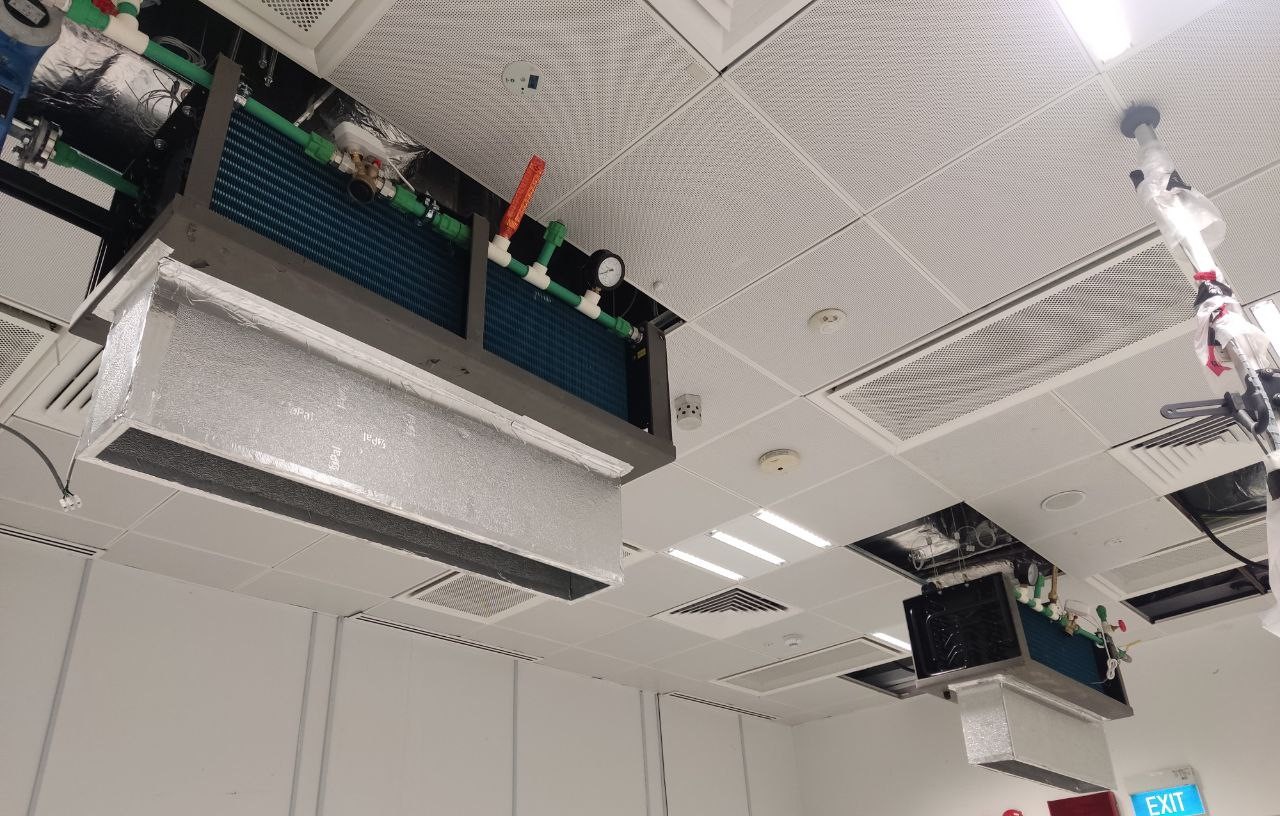
Experimental setup of two PDDCC units in the BCA Skylab test chamber. (Photo: Steve Kardinal Jusuf)
This research resulted in two developments that could lead to greater adoption of this cooling technology in the market. The first is a design guideline for the generic sizing of the PDDCC system, which could help mechanical and electrical consultants choose PDDCC size for their projects quickly. The second is data generated from the project used towards the creation of a code of practice (TR 102) for PDC system in air-conditioning applications as technical reference.
A Multi-Faceted Approach for Achieving Decarbonisation Goals
“The future energy resilience and decarbonisation of the built environment will require efforts on multiple fronts, and will depend not only on technological readiness, but also on wider-scale industrial adoption and governmental policy support. We must therefore embrace a multi-disciplinary and cross-sector approach to facilitate energy transformation and create a circular, sustainable economy,” said Asst Prof Feng.















![[FA] SIT One SITizen Alumni Initiative_Web banner_1244px x 688px.jpg](/sites/default/files/2024-12/%5BFA%5D%20%20SIT%20One%20SITizen%20Alumni%20Initiative_Web%20banner_1244px%20x%20688px.jpg)


